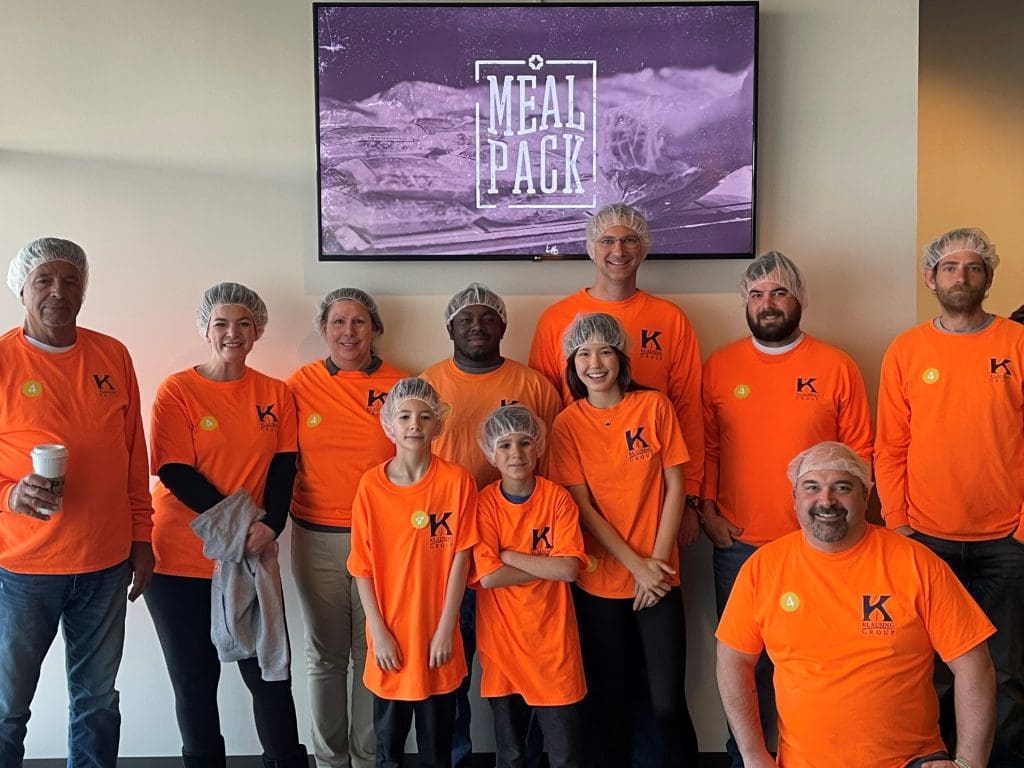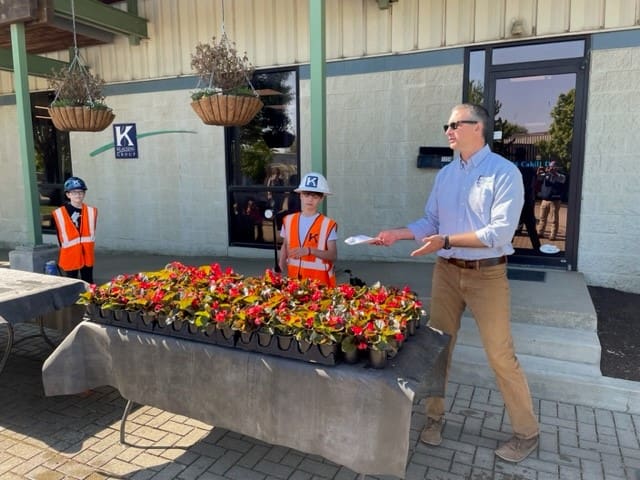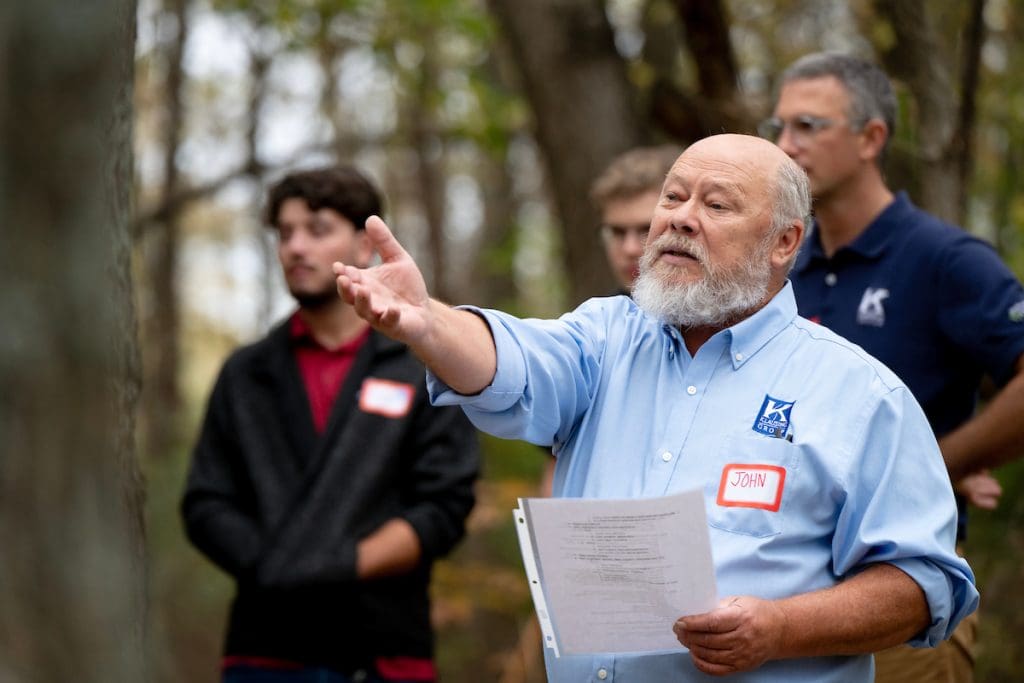
What do TOMS, Patagonia, Ben & Jerry’s, King Arthur Baking Company and New Belgium Brewing all have in common? They are all Certified B Corporations.
Roscoe Klausing, CEO of Klausing Group, Inc., based in Lexington, Kentucky, says he started seeing the B Corp logo on brands he purchases and admires so he investigated the certification further. His company is currently on the journey to become a Certified B Corp.
What Is a B Corp?
B Corporations are businesses that are purpose-driven and create benefit for all stakeholders, not just shareholders. Organizations with this certification conduct business as if people and places matter, and through all their products, practices and profits they aspire to do no harm and benefit all.

Klausing says it is what a Certified B Corp is that drove them to make this journey.
“Data suggests that buyers prefer to purchase goods and services from companies that share their values and do good in the world,” Klausing says. “It’s true of workers too. They want to work with companies that reflect their values and have a mission and purpose larger than turning a profit. Does this mean we get to charge a significant premium for our services? No. But it can give us a competitive advantage.”
Companies that are Certified B Corps are required to verify their social and environmental performance every three years. B Corps are also expected to pay an annual fee based on their gross revenue.
Completing the B Impact Assessment
Becoming a Certified B Corp business calls for amending your legal documents with the B Corp legal framework as well as pulling together a team across your different departments to collect the information needed for the B Impact Assessment.

The B Impact Assessment is scored to measure a company’s social and environmental performance, both overall and within key impact areas. Scoring within the B Impact Assessment is designed to allow comparability and identify and track opportunities for improvement over time.
The assessment asks questions across five categories: governance, workers, community, the environment and customers.
“We started working our way through the B Impact Assessment (BIA) in early 2023,” Klausing says. “It’s an in-depth and comprehensive survey, with up to 250 weighted and unweighted questions across different operational Impact Areas and Impact Business Models. We’ve done a little bit each month and compiled supporting documents as we go. We expect to finish the assessment soon and submit our application for certification in Q1 of 2024.”

Once a company reaches at least 80 points on the B Impact Assessment, it can submit the assessment for review.
“The average score of ordinary businesses in the BIA is 51 points and many companies, in fact, don’t receive the required 80 points their first time around,” Klausing says. “We’re 66% of the way through the assessment and on track to score above the average but short of the threshold to become certified.”
After submitting the B Impact Assessment, an evaluation analyst will confirm the company’s business operations and Impact Business Model points and track. A verification analyst will verify additional questions. Once this process is completed, the company will sign the B Corp Agreement and Declaration of Interdependence.
Lessons Learned and Making Improvements
Klausing says as they’ve progressed through the BIA, they’ve set goals for themselves and identified opportunities to make policy changes in the company that would improve their score.
“That’s the real beauty of the whole thing,” he says. “It’s not just a certification. It’s a roadmap to be a better business that pays attention to its impact on its community and the environment while pursuing profits.”

For instance, while completing the workers section of the BIA, Klausing Group answered many questions about health, wellness and safety. Health care plans, eligibility and worker participation levels were all assessed.
“We’ve benchmarked our benefit offerings against other NALP companies for years, but this was the first time we benchmarked our offerings against other industries,” Klausing says. “It resulted in the decision to expand our coverage and reduce health care costs for employees.”
Previously, the company’s health care plan rewarded youth and men while penalizing maturity and women. Now, all Klausing Group employees pay the same rate regardless of age, gender, or ability to ‘buy up.’ The new plan offers lower deductibles, lower co-pays, better co-insurance, and lower maximum out-of-pocket. The company is also now paying 80% of employee-only coverage and 20% of dependent coverage.
“Our staff is aware we’re working through the BIA and I can draw a straight line between it and some policy changes that have directly impacted our staff and been very well received,” Klausing says.
Klausing says the sections of workers and governance were the most challenging for them as it’s harder for a seasonal business to achieve some of the standards set by other industries. He explains that with the governance section, they’ve had to formalize practices they do naturally and never thought to document.

“As an example, our work in the BIA has resulted in a new policy that prohibits bribes in any form, including kickbacks or gifts, on any portion of contract payments or soft dollar practices and a formal oversight policy covering direct or indirect political contributions, charitable donations, and sponsorships,” Klausing says. “Clearly, it all makes sense and is a good practice but most small businesses don’t have these kinds of policies formalized.”
For those interested in the movement, Klausing suggests reading John Mackey’s book Conscious Capitalism: Liberating the Heroic Spirit of Business.
“In my view, all businesses need to do a better job of serving their stakeholders, not just their shareholders,” Klausing says. “For those interested in learning more, I suggest visiting the B Corp website.”

